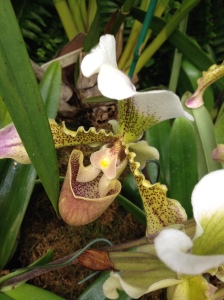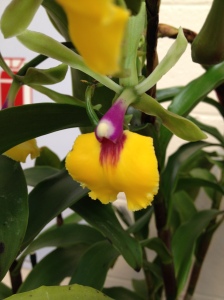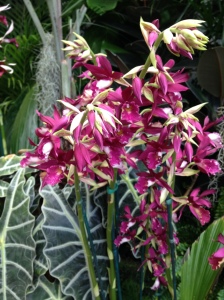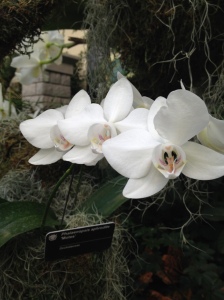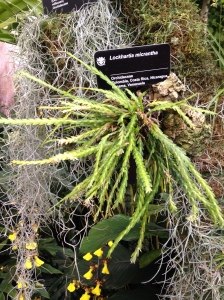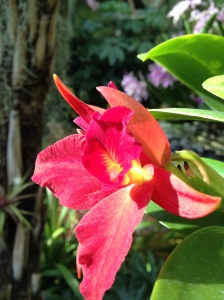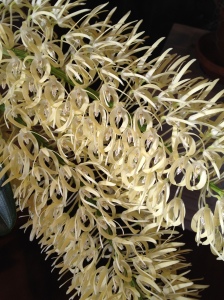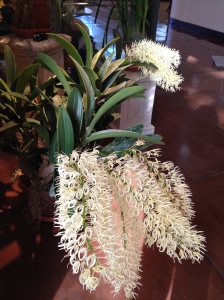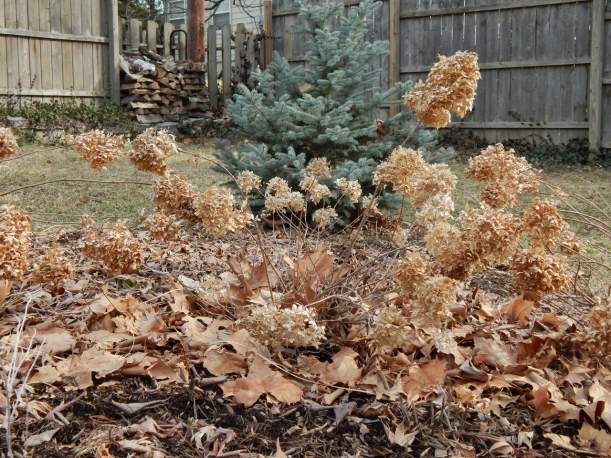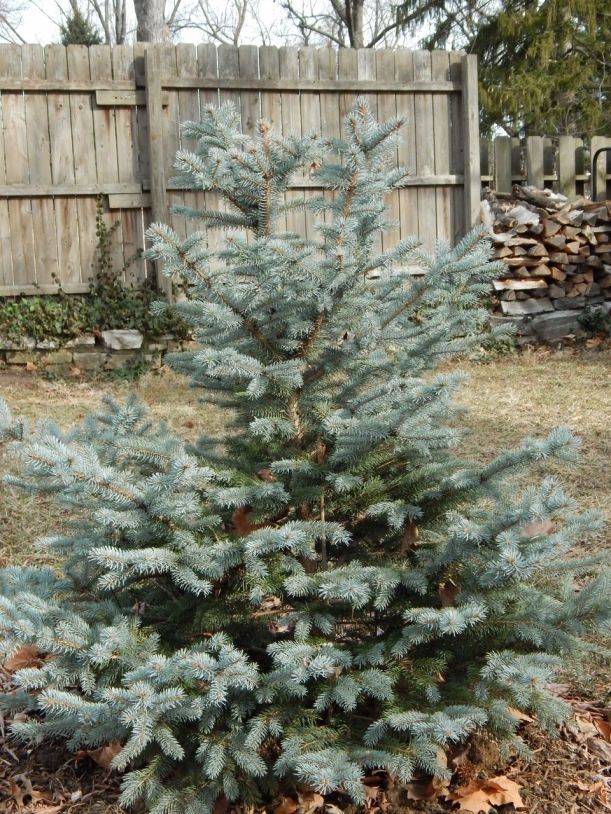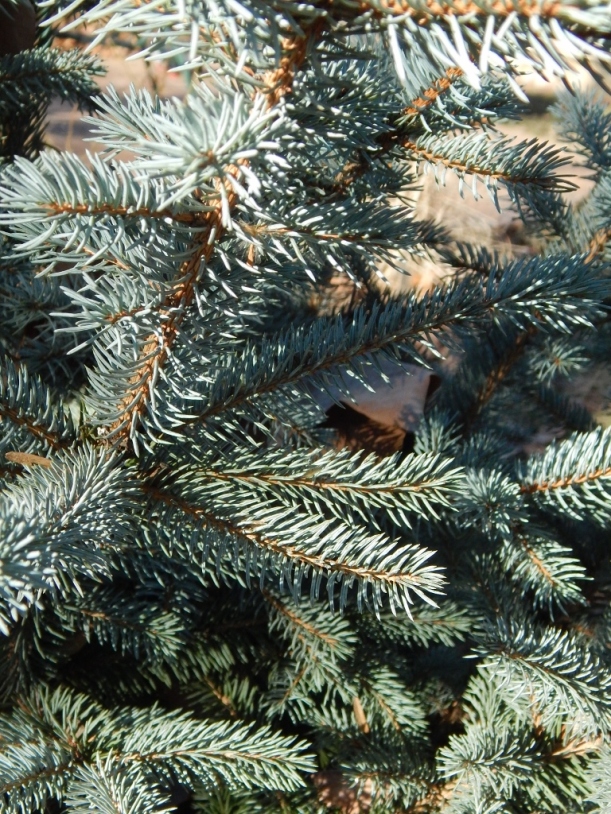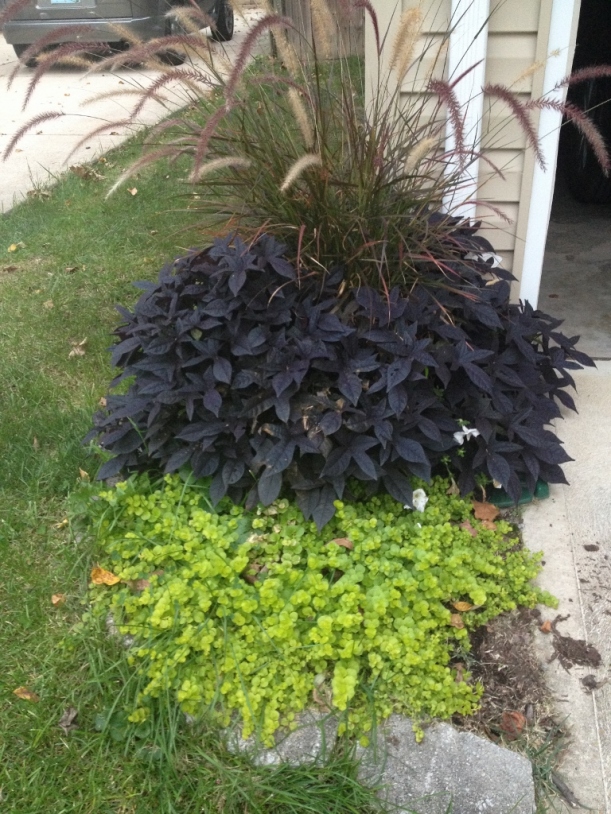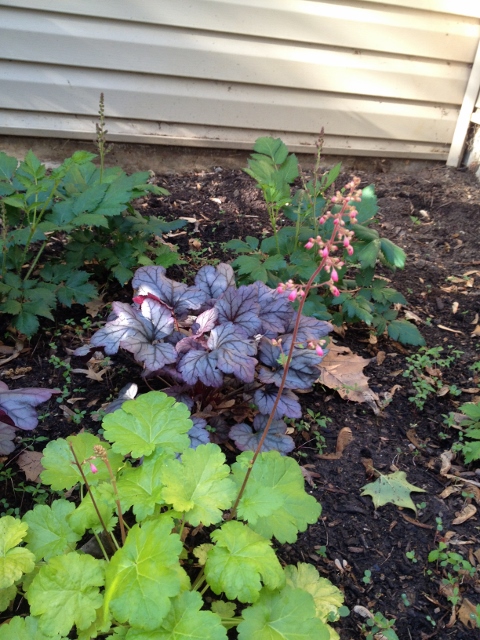Lush may not be the first adjective that comes to mind when one thinks of gardening in San Antonio. Difficult rocky soil conditions can seem unforgiving to one’s back and the shovel. Summers are very hot and dry; rainfall is cause for celebration. Yet sprawling live oak trees and limestone fences are emblematic in this tough Texas landscape and lend charm to to this Southwest city.
My sister Susan set her roots in San Antonio more than 35 years ago, unfazed by the gardening conditions. As the crow flies, her home is about 800 miles southwest of St. Louis. Driving would would take more than 15 hours, which is why when I sit in her back yard and take in its beauty, it feels like I am worlds away. Because our climates are decidedly varied–she is in USDA Plant Hardiness Zone 8b and I am in Zone 6a– this makes our small-yard tours all the more enjoyable when we are together. This post, unfortunately, is not a recap of a personal visit, but an an armchair tour for both you and me. As the temperatures rise and the last frost date (March 1) nears in San Antonio, Susan sent me a few photos that show her lush landscape as it awakens.

A tabletop container of succulents. Just to the left of this patio is the fence, dotted with containers of succulents. The bare trees will soon provide a canopy of shade and provide for an intimate setting in the two seating areas of the yard. The arching branches of the Mexican plum hold hanging baskets.
San Antonio is increasingly drought prone and relies on the Edwards Aquifer as well as the Trinity and Carrizo aquifers for its water. Smart gardeners in this part of the United States focus on conserving resources, most notably water, when selecting plants. In Susan’s small backyard, creative expression is evident through drought-hardy native selections and, increasingly, succulents .A large Mexican plum (“Prunus Mexicana) has arching branches to provide lots of look and plenty of shade. Better yet, this native has inconspicuous flowers and is drought hardy. I have always enjoyed the respite of her backyard, no matter the time of year. There is a laid-back casual style to her yard that immediately puts visitors to ease.
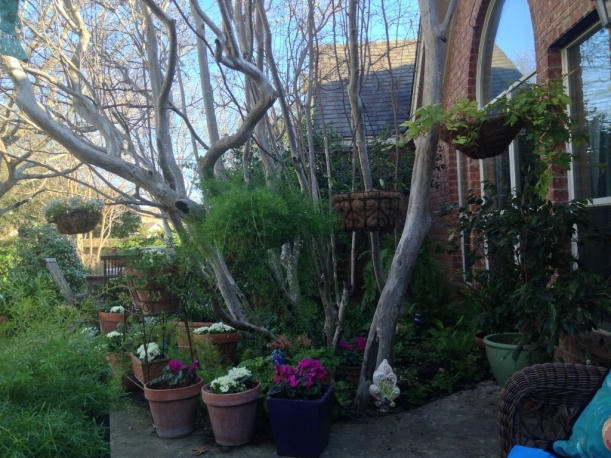
Bare now, the Mexican plum has large, arching branches that provide lots of shade when the days are hot.
Back-saving planters are found throughout the yard and help create a casual vibe. I am continually amazed at how Susan’s selections thrive with minimal water, but they were not chosen haphazardly, far from it. For years she has spoken about the expert advice imparted by the “Texas Aggies,” also known as the Texas A&M University extension service. The Aggies have not let her down. Which brings me to a question, Arch City readers, where do you turn to for advice for your growing region? One of my favorite resources is the Missouri Botanical Gardens plant finder.
Broadleaf evergreens are the backbone to the garden and provide color throughout San Antonio’s relatively mild winters. A densely leaved burford holly provides a screen from neighboring yards. The berries will soon be gone, replaced with clusters of springtime white flowers. Asparagus fern grows year-round and like the burford holly produces red berries in the winter. The fine texture of this plant belies its drought tolerance and vigorous nature. Asparagus fern is well established in the garden bed and cascades from hanging baskets. Two seating areas in the yard are surrounded by large trees and convey an intimate feeling. Perfect for those sister-to-sister conversations. A limestone fence also runs across the back of the yard. I love this fence and the plantings she has around it. A small pond is in front of the fence and worth a lengthy stop when we’re touring the yard.

Evergreen shrubs such as this yaupon holly (ilex vomitoria) are the backbone of the garden and provide color in the winter months.
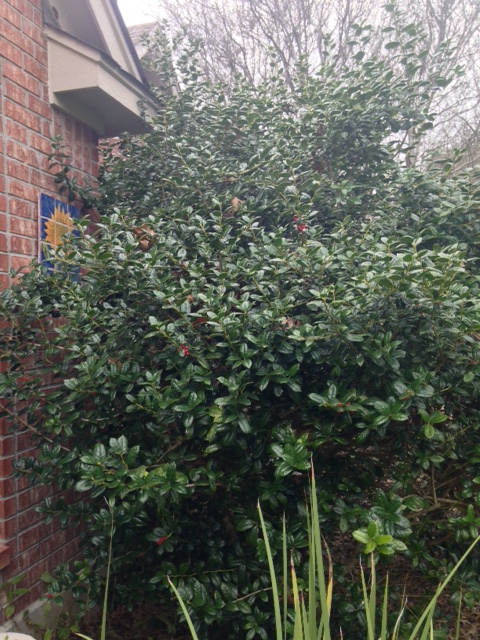
Burford holly (ilex cornuta) makes an evergreen screen from the neighboring yard.

A crape myrtle is to the left of the pond, which is densely planted with sun loving natives.
With daytime temperatures now averaging in the mid to upper 60s F (18 C), potted cyclamen and primrose provide a nice contrast to enjoy while sipping a sweet tea. Soon the crape myrtle will be in bloom as will the plantings in and around the pond, providing a nice view from the patio and an attractive display against the lovely limestone fence.
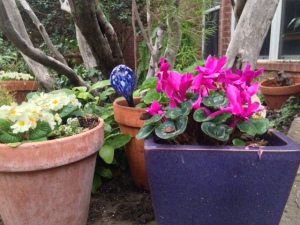
Primrose and cyclamen in bloom in February.
These lovelies are treated more as an annual than a perennial in San Antonio due to its hot, hot summers. Before long, heat loving, colorful annuals will take their place. Brightly colored containers and chair cushions also provide color to her garden. By the time I am placing pansies in pots to provide a spot of spring color, Susan’s yard will have transitioned and be in full bloom, her pansies a recent memory.
Small space gardening is full of possibilities. I am inspired by large amount of creativity in the small city yards and suburban yards I have been invited into. I continue to explore the possibilities for my own small yard.
To glimpse another small backyard garden, please visit my June 2014 post “An Urban Garden Oasis.”



